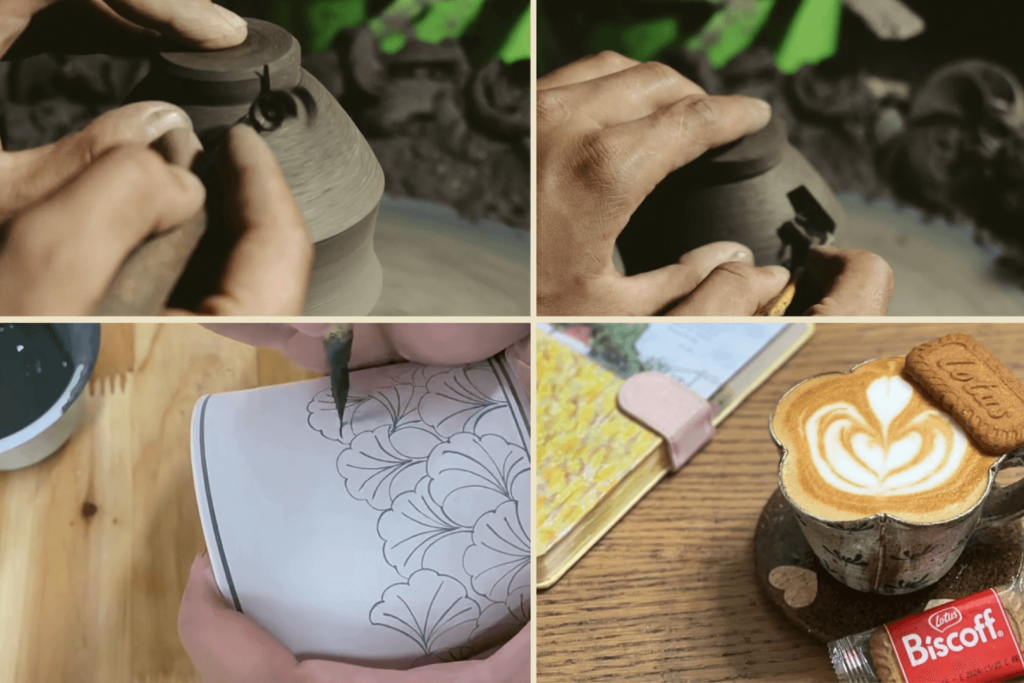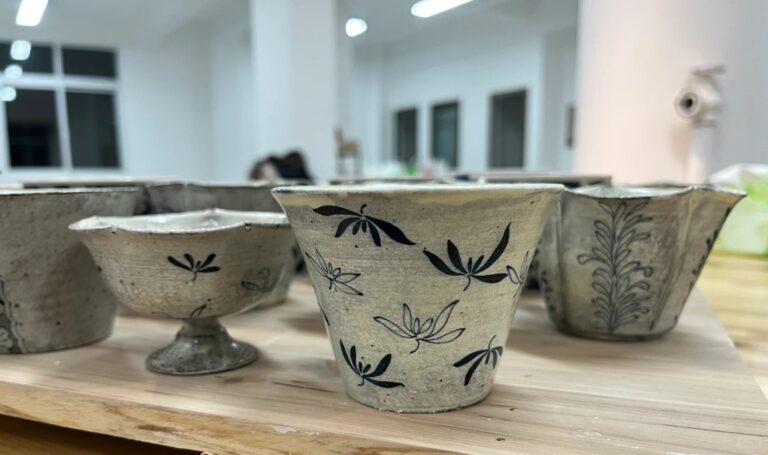A Guide to Choosing the Perfect Handcrafted Ceramic Coffee Cup
Outside of work, the small moments in life allow us to regain our strength. Whether it’s in a quiet corner of the office or at home, enjoying a cup of aromatic coffee or your favorite drink not only helps to quickly restore energy but also brings good mood.
If, at this moment, you are holding a delicate personalized handcrafted ceramic coffee cup, it will add endless beauty to the tranquility. Or, when you are reading or reflecting alone, taking a break and handling your beloved cup, appreciating the exquisite patterns on it with their meaningful symbolism, brings peace and joy and becomes a great pleasure in life.
In a refined everyday life, whether it’s a gathering with friends or a visit from relatives, a set of unique and personalized handcrafted ceramic coffee cups can offer a great tactile and visual experience each time a guest holds the cup, making the entire social moment even more enjoyable.
Furthermore, when friends, close ones, or bosses have special moments worth celebrating, a set of personalized handcrafted ceramic cups with beautiful symbolism, elegance, and appropriateness might become the most thoughtful gift you can give.

So, when choosing customized handcrafted ceramic cups, here are several factors to consider:
1. Choosing Materials
Most ceramic products on the market are industrially produced, and some products may use rough materials that even contain industrial-grade materials or scraps. These products are usually priced cheaply. Handcrafted ceramic cups, however, differ greatly in material selection. Generally speaking, handcrafted ceramics can be divided into three types:
- Machine-selected materials: This method is used for mass production and involves a simple material selection process.
- Old craftsman-selected materials: Typically, materials are selected based on general standards, choosing materials that match the shape of the item, whether it’s the theme or the form.
- Young artist-selected materials: Young artists pay more attention to material selection, choosing the right materials based on their creative themes and strictly controlling the material’s source. To get the best quality materials, artists often spend a significant amount of time, even waiting for days, to choose high-priced materials from stable mineral sources, never compromising on the ordinary materials found in the market.
2. Degree of Craftsmanship
We won’t discuss mass-produced ceramic products here. They are usually uniform, lack beauty, and personality. True handcrafted ceramic cups possess unique charm.
For handcrafted ceramic cups, there are typically two types:
- Traditional craftsmanship: Often produced in bulk by experienced artisans, followed by hand painting and firing.
- Artist craftsmanship: Like Peony Ceramics’ approach, where the entire process, from material selection, throwing, painting to firing, is completed by the same artist. Since the artist has already conceived every detail in their mind, they choose materials based on the creative theme, and the entire process flows naturally, resulting in works that exude vitality.
Hand-painted half-handmade vs. pure handmade: How to distinguish?
- Half-handmade ceramics: Typically made with machine-molded bodies, then manually repaired and decorated. The form is more standardized, but details often appear rigid, such as an uneven spout line.
- Handcrafted ceramics: Due to hand-thrown molding, the body will have slight irregularities, such as varying thicknesses—some areas may be slightly thicker, others thinner. There may also be hand marks.
- Pure hand-painted ceramics (collectible grade): Every brushstroke has variations in depth, with lines that are lively and not stiff, such as the watery strokes of blue-and-white porcelain with natural color transitions.
Handcrafted Ceramic Coffee Cups The trick
You can compare two identical ceramic pieces. The details of the patterns will certainly differ. Hand-painted ceramics will never have “copy-paste” designs. The glaze on handmade pieces may show natural color differences or uneven thickness. For example, at some turns, the glaze may be darker. Non-handmade ceramics, however, will have an even glaze with no natural variations.
Hand-thrown ceramics: Hand-thrown pieces have thicker bottoms, with spiral “jump marks” (like fingerprints) at the base, while machine-molded pieces are smooth as paper.
Authentic Jingdezhen porcelain: Made with a mixture of kaolin and porcelain stone, its body is delicate and smooth, and when lightly tapped, it produces a crisp sound. Poor quality porcelain will sound muffled.
3. Theme and Symbolism
Good Handcrafted Ceramic Coffee Cups are often more than just decorative items—they typically carry profound meaning. When choosing a ceramic cup, the symbolism of the theme is very important. Some works may be created casually without much consideration of theme, thus lacking deeper meaning. However, truly high-quality handcrafted ceramic cups often incorporate auspicious elements. For example:
- Gourd: Signifying prosperity and good luck.
- Chrysanthemum: Symbolizing purity and longevity.
- Bamboo: Representing growth and resilience.
- Lily: Symbolizing love and purity.
- Nine-colored Deer: Representing wisdom, loyalty, and good fortune.
- Goldfish: Often symbolizing wealth, good luck, and prosperity.
These symbols of luck can bring long-lasting blessings to you and your family, filling every drink with good fortune and warmth.
After this introduction, you will have a deeper understanding of handcrafted ceramics.
Finally, here’s a little secret for you: The handmade time analysis for a pure handcrafted ceramic cup (per piece): Material selection (excluding initial preparation), throwing, and trimming take about 1-2 hours. Carving (for some products that require flat carving) takes about 4 hours. Hand-painting takes about 6 hours (some require secondary hand-painting). Firing with cooling takes around 28 hours (sometimes even longer). This is just the basic process. Considering the final firing yield rate, the ultimate trick is the price measurement: A truly handmade work will not cost less than 8 hours of an artist’s work time, not including the artist’s premium. Of course, art is priceless, and the purpose of this is simply to help you identify truly handmade products using a somewhat inappropriate quantification.

